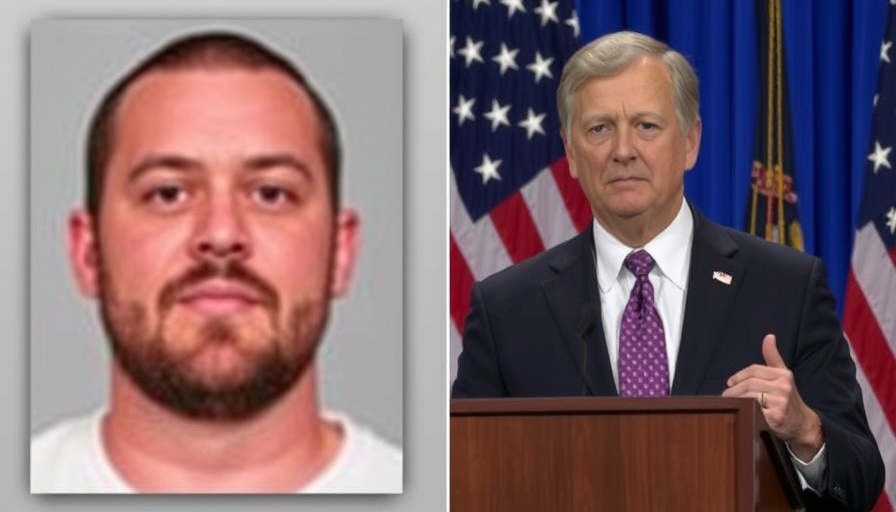
Understanding the Michigan Church Shooting Tragedy
The shocking events that unfolded on September 28, 2025, at the Church of Jesus Christ of Latter-day Saints in Grand Blanc, Michigan, are both heartbreaking and disturbing. Thomas Jacob Sanford, identified as the shooter, carried out an attack that would claim the lives of four people and leave eight others injured. This tragic incident, which involved a vehicle ramming into the church followed by gunfire and arson, is being classified as "targeted violence" by the FBI, who are now leading the investigation.
A Glimpse into Thomas Jacob Sanford's Life
Sanford, a 40-year-old U.S. Marine veteran, had a complex life marred by personal struggles and controversial views. Prior to the attack, he engaged in friendly conversation with Kris Johns, a local city council candidate. During their interaction, Sanford expressed animosity toward the LDS church, claiming that Mormons were "the antichrist." This sentiment appeared to be part of a broader pattern of anti-LDS sentiment that Sanford had articulated in other settings, reflecting a troubling online discourse.
The Impact of Military Service on Personal Trauma
With his military background, Sanford’s tragic descent into violence raises questions about the mental health challenges faced by veterans. Many individuals returning from combat, particularly in Iraq, experience conditions like PTSD, which can manifest in violent or erratic behavior if not properly addressed. The realities of military service and the struggles many veterans endure upon returning home deserve further examination, particularly in the wake of violent incidents such as this.
Repercussions for the Community and the Nation
The repercussions of such violence extend far beyond the immediate loss of life. The attack on the church, a sanctuary meant for community connection, disrupts the very fabric of trust and safety that these establishments are supposed to provide. The Church of Jesus Christ of Latter-day Saints and other faith communities will likely grapple with the fear and trauma this incident has wrought, making discussions about safety in places of worship more pressing than ever.
Political Dimensions and Social Responses
The political discourse surrounding church shootings is often polarized. In this case, Sanford’s views, which included expressing his support for the Second Amendment and his history of military service, complicate the narrative. Communities must navigate these complex dynamics while addressing gun violence and promoting safe discourse surrounding religion and personal belief. The tragic loss of life will undoubtedly spur calls for political action aimed at preventing such future tragedies.
Emotional Toll and Grief Support
The emotional toll on the families of the victims and the broader community is immeasurable. Grief counseling, community support initiatives, and mental health resources will be essential to help those affected heal. As the investigation continues, the community will need spaces to mourn and discuss how to prevent such violence in the future.
As we reflect on the Michigan church shooting and its implications, it becomes increasingly evident that addressing the roots of violence, particularly through understanding mental health issues, fostering community connections, and articulating a compassionate political discourse, is more critical than ever.
Call to Action: As discussions of gun violence and safety resonate in our communities, it's important for each of us to engage in meaningful dialogues that foster understanding and healing. Consider reaching out to local community organizations that promote mental health awareness and support those affected by violence.
 Add Row
Add Row  Add
Add 




Write A Comment